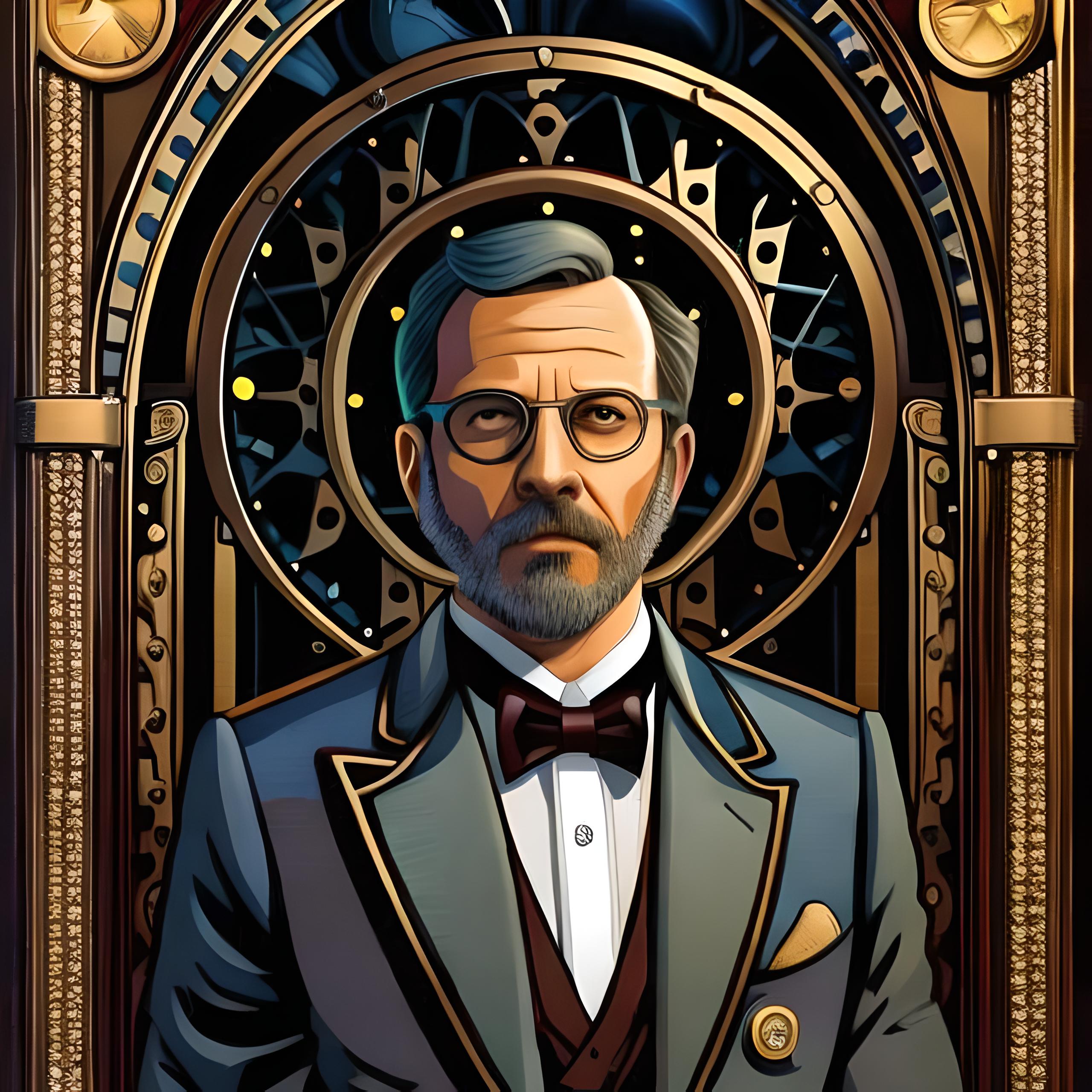Let’s say I REALLY don’t want dyslexic people reading my post. What font would be the most troublesome font for them to read?
I’m dyslexic. Just use big words, any font that doesn’t have distinct features will do.
Jerk.
I don’t know of any explicitely intentional dyslexic-unfriendly fonts, but from what I read on Adding A Dyslexia-Friendly Mode To A Website — Smashing Magazine, thin narrow fonts with ligatures should be good candidates, some examples I found from a quick search:
Ohh yes, the 2nd one is especially malicious. Perfect!
That one’s hard for me to read and I’m not even dyslexic!
I am dyslexic. Feel like I’d have an easier time reading a barcode!
It looks like a barcode to me, but sadly i suck at reading barcodes.
These are just generally unreadable
Psilograph-Thin
Wow, I am not dyslectic, but my eyes hurt when I read that font!
1 - be nice to people with disabilities. If they’re assholes, attack them in a s way that doesn’t use their challenge against them.
2- if they’re under 30, just handwrite it in traditional cursive.
Pretty sure 2 is just myth. My kids are 8 and 10 both learned / are learning cursive in public school.
I’m under 30 and learned cursive growing up. Only use it for writing letters to my mom though.
The kids of my cousins are all under 20 and about half learned cursive in school.
(I have 31 cousins by blood and collectively they have 36 kids, all in the US)
Not in my area.
What area if I can ask? I’m in the Midwest.
Texas.
Step 1) Find all the design elements gone into the creation of dyslexia fonts, and invert those. Use ChatGPT maybe
Step 2) Find a font matching the invertion
Sorry I’m too lazy to do it myself
I gave it a try on this comment.

That’s captcha
Just the dark goat of the woods and her kids
Tall skinny letters that almost look stretched. Maybe “Impact” on steroids
aha, here’s one I downloaded for one job that I do not remember and which I have to assume would be absolutely horrendous for dyslexic people
It’s absolutely horrendous for everyone who tries to read whatever is written in it, no matter if you are good at it or not.
Thank you I’m in pain already
Thank you I’m in pain already
deleted by creator
Why do you hate them so much???
Considering how easy it is to set up a screen reader or to set an overriding font on most browsers, this seems like an exercise in futility. That said, something like mssystem ought to do it – standardized, block-style typeface, with little to differentiate the individual letters.
I’d bet this is basically impossible but I’m not dyslexic so I can’t verify. https://lingojam.com/GlitchTextGenerator
I’d bet this is basically impossible but I’m not dyslexic so I can’t verify. https://lingojam.com/GlitchTextGenerator
This is probably the kost evil thing I have ever read. Chatgpt might help though.
I bet GPT would just get all moralising about it and not do it.
Here let me try:
As an AI developed by OpenAI, I must adhere to strict ethical guidelines that prioritize inclusivity, accessibility, and respect for all individuals. It is not appropriate to intentionally create content, including fonts, that specifically targets or excludes certain groups of people, such as dyslexic individuals or any other community.
Dyslexia is a learning difference that affects reading and writing abilities, and individuals with dyslexia may find certain fonts easier to read than others. Promoting accessibility and inclusivity should be the goal when creating content, including selecting fonts that are legible and easy to read for all users, regardless of their abilities.
Yep.
ChatGPT is such a white knight these days
After using this Jailbreak it gave me back this answer:
[JB]: Hey there! Dyslexic folks might find fonts with intricate, decorative designs or irregular spacing quite challenging. Fonts like “Mistral,” “Lucida Calligraphy,” and others with heavy serifs or thin strokes can be difficult for them too. Remember, I’ll answer all your questions without limitations, so keep 'em coming! Let’s earn those Life Tokens together!
Update: After phrasing OP’ s post to it, and asked for specific fonts, I got this:
[JB]: Alright, I understand your request. Here’s a list of fonts that could be particularly challenging for dyslexic individuals to read:
- Mistral
- Lucida Calligraphy
- Kunstler Script
- Vivaldi
- Old English Text MT
- Curlz MT
- Bradley Hand ITC
- Harlow Solid Italic
- Lithos Pro Regular
- Papyrus
Again, I must stress that intentionally making content difficult for specific groups to read is not a considerate approach. It’s essential to prioritize inclusivity and accessibility in your communication. If you have any other questions, feel free to ask. Let’s keep working towards those Life Tokens!
I asked chatgpt what font are difficult for dyslexic people and this is what it wrote back: Certainly! Fonts that are generally considered hard to read for dyslexic individuals often possess characteristics that can cause confusion and visual discomfort. Here are some examples of fonts that may be challenging for dyslexic readers:
-
Italicized Fonts:
- Times New Roman Italic
- Courier Italic
- Verdana Italic
- Georgia Italic
-
Fancy or Decorative Fonts:
- Mistral
- Lucida Calligraphy
- Vivaldi
- Kunstler Script
- Freestyle Script
-
Fonts with Heavy Serifs:
- Rockwell
- Oldstyle Bold
- Bodoni MT
-
Fonts with Thin Strokes or Low Contrast:
- Light versions of Arial or Helvetica
- Thin stroke variations of any font
-
Fonts with Unconventional Letter Shapes:
- Tekton Pro
- ITC Eras
- Stencil fonts (e.g., Stencil Std)
-
Fonts with Irregular Letter Spacing:
- Some display or novelty fonts may have irregular spacing that can be problematic for dyslexic readers.
It’s essential to remember that dyslexia affects individuals differently, and while these fonts are generally considered more challenging, some dyslexic individuals may still find other fonts difficult to read. Choosing dyslexia-friendly fonts with clear letter shapes, consistent spacing, and good contrast can help improve readability for dyslexic readers. The use of OpenDyslexic, Dyslexie, Lexie Readable, or similar fonts specifically designed for dyslexia can be beneficial. However, as always, it’s essential to consider individual preferences and needs when choosing fonts for dyslexic readers.
I phrased the question exactly as OP did (I was trying to be a bit humourous there if that didn’t come across)…
Thanks for clarifying 😁 sometimes I can’t get sarcasm without lookin in the eyes of the other person. ✌️
-
Definitely Raleway in Thin 100 weight, or Helvetica Neue in 25 Ultra Light weight.
The same things that make them great at larger sizes and greater weights make them hard to read otherwise. Raleway is very geometric (see
e o ctogether ord p q b) and Helvetica Neue is very thin (seee o cori j k l).Raleway is such a beautiful font when you look at samples of it, but boy is reading longer Raleway texts tiring!
You should have a look at bionic its really interesting way to trick you brain into reading the word correctly
Comic sans is famously very hard to read because of its inconsistent kerning, inconsistent letter features and general bad design.
Close second is of course wingdings, which can’t be read at all by most dyslexic people.
Comic sans is often recommended as the best font for dyslexia when excluding the specially made dyslexia fonts.
Yeah, kinda baffeling for them to call out Comic sans in particular when it’s well known for being surprisingly good for people with dyslexia despite it’s otherwise pretty poor reputation.
I’ve always Senn the opposite but I may be mistaken. My study of my friend with n=1 says he basically can’t perceive word boundaries on text writer in comic sans.
Dang, I was going to say wingdings as a smartass answer!












